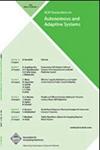EdgeMart:在无线边缘实现可持续的网络OTT经济,以节省多媒体IP带宽
IF 2.2
4区 计算机科学
Q3 COMPUTER SCIENCE, ARTIFICIAL INTELLIGENCE
引用次数: 0
摘要
随着5G+服务的出现,在新冠肺炎疫情后的OTT内容热潮中,移动用户越来越方便地享受来自CDN驱动的流媒体和追赶电视服务(Netflix、iPlayer)的高质量多媒体内容。为了使ISP拥有的固定线路网络免受CDN流式多媒体流量的影响,已经提出了系统思想(例如,[45]中的Wi Stitch),以(a)利用5G服务,使消费者能够在边缘共享缓存的多媒体内容,以及(b)因此,更重要的是,减少核心网络的IP流量。不幸的是,考虑到当代多媒体内容可能是一种货币化资产,这些想法没有考虑到共享内容的这一重要事实。我们介绍了EdgeMart,这是一个内容提供商联合的、计算可持续的网络(图形)市场经济,用于与无线边缘网络(WEN)的自主用户付费共享缓存许可(OTT)内容。EdgeMart是一个独特的寡头垄断多媒体市场(经济),包括非合作内容卖家/买家的竞争性网络子市场,每个子市场由一个仅连接(网络化)到卖家子集的单个买家组成。我们证明,对于任何WEN支持的供需拓扑,存在纯策略EdgeMart均衡,该均衡(a)几乎有效(在微观经济学意义上),表明经济可持续性,(b)对边缘用户进入/退出具有鲁棒性,以及(c)可以在多时间内达到(表明计算可持续性)。此外,我们通过实验表明,对于不同密度的物理WEN,与最近引入的基于Wi-Sticch WEN的内容交易架构之上实现的理想(相对不太实用)、无私和非货币化的“经济”相比,合理自私的EdgeMart经济体可节省类似数量级的多媒体IP流量。此外,EdgeMart的概念有助于设想商业OTT平台的机会主义(按许可文件付费)客户服务的监管边缘经济。本文章由计算机程序翻译,如有差异,请以英文原文为准。
EdgeMart: A Sustainable Networked OTT Economy on the Wireless Edge for Saving Multimedia IP Bandwidth
With the advent of 5G+ services, it has become increasingly convenient for mobile users to enjoy high quality multimedia content from CDN driven streaming and catch-up TV services (Netflix, iPlayer) in the (post-)COVID over-the-top (OTT) content rush. To relieve ISP owned fixed-line networks from CDN streamed multimedia traffic, system ideas (e.g., Wi-Stitch in [45]) have been proposed to (a) leverage 5G services and enable consumers to share cached multimedia content at the edge, and (b) consequently, and more importantly, reduce IP traffic at the core network. Unfortunately, given that contemporary multimedia content might be a monetised asset, these ideas do not take this important fact into account for shared content. We present EdgeMart - a content provider federated, and computationally sustainable networked (graphical) market economy for paid-sharing of cached licensed (OTT) content with autonomous users of a wireless edge network (WEN). EdgeMart is a unique oligopoly multimedia market (economy) that comprises competing networked sub-markets of non-cooperative content sellers/buyers - each sub-market consisting of a single buyer connected (networked) to only a subset of sellers. We prove that for any WEN-supported supply-demand topology, a pure strategy EdgeMart equilibrium exists that is (a) nearly efficient (in a microeconomic sense) indicating economy sustainability, (b) robust to edge user entry/exit, and (c) can be reached in poly-time (indicating computational sustainability). In addition, we experimentally show that for physical WENs of varying densities, a rationally selfish EdgeMart economy induces similar orders of multimedia IP traffic savings when compared to the ideal (relatively less practical), altruistic, and non-monetized “economy” implemented atop the recently introduced Wi-Stitch WEN-based content trading architecture. Moreover, the EdgeMart concept helps envision a regulated edge economy of opportunistic (pay per licensed file) client services for commercial OTT platforms.
求助全文
通过发布文献求助,成功后即可免费获取论文全文。
去求助
来源期刊

ACM Transactions on Autonomous and Adaptive Systems
工程技术-计算机:理论方法
CiteScore
4.80
自引率
7.40%
发文量
9
审稿时长
>12 weeks
期刊介绍:
TAAS addresses research on autonomous and adaptive systems being undertaken by an increasingly interdisciplinary research community -- and provides a common platform under which this work can be published and disseminated. TAAS encourages contributions aimed at supporting the understanding, development, and control of such systems and of their behaviors.
TAAS addresses research on autonomous and adaptive systems being undertaken by an increasingly interdisciplinary research community - and provides a common platform under which this work can be published and disseminated. TAAS encourages contributions aimed at supporting the understanding, development, and control of such systems and of their behaviors. Contributions are expected to be based on sound and innovative theoretical models, algorithms, engineering and programming techniques, infrastructures and systems, or technological and application experiences.
 求助内容:
求助内容: 应助结果提醒方式:
应助结果提醒方式:


